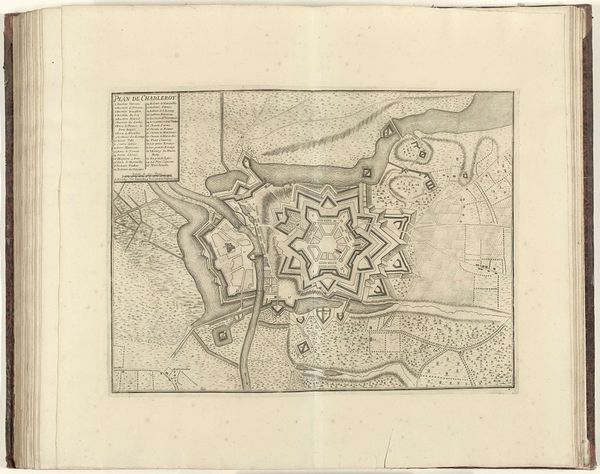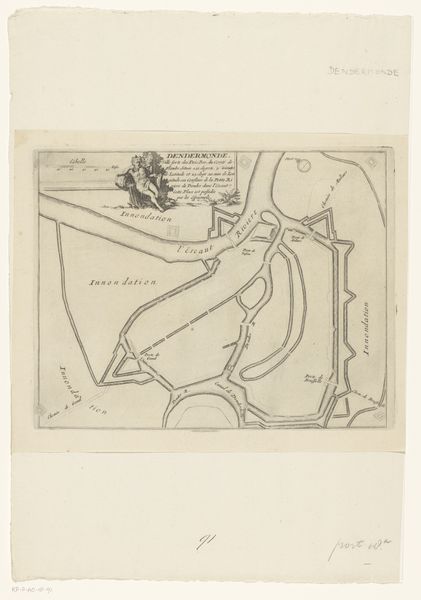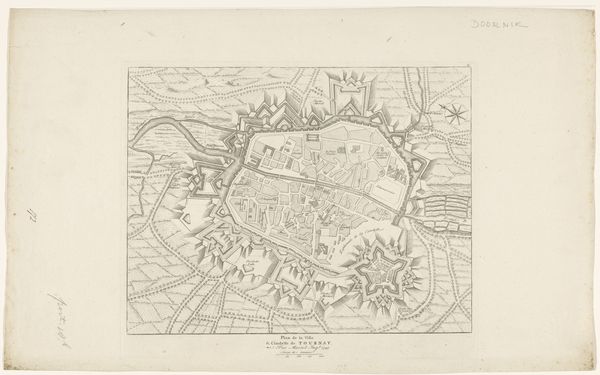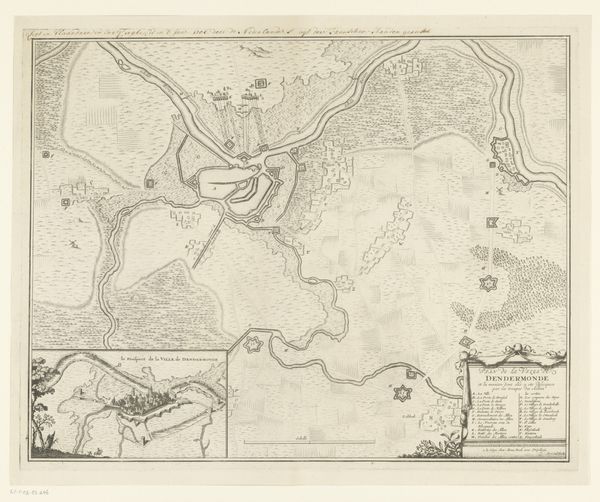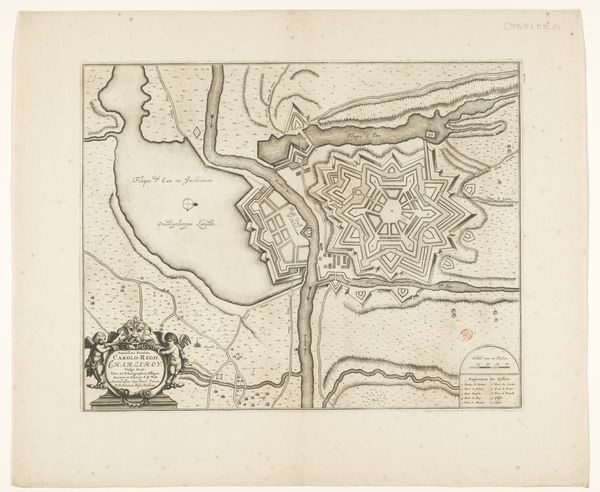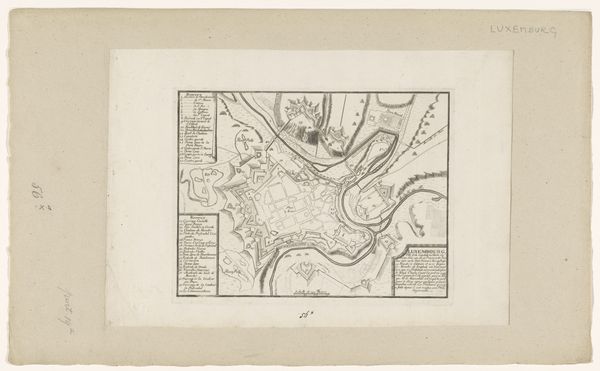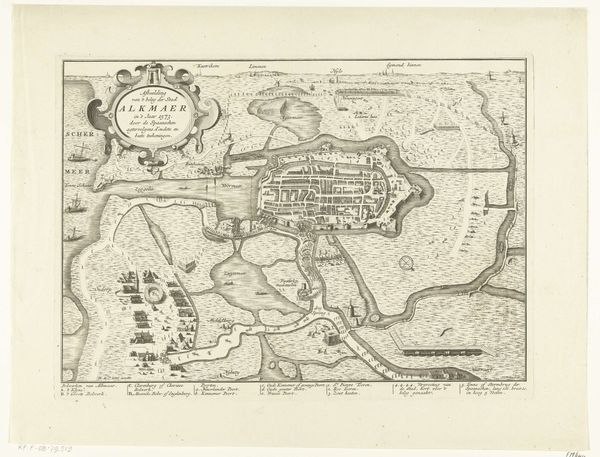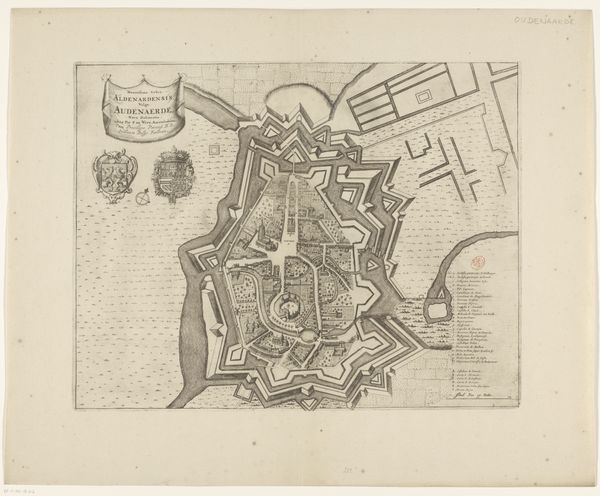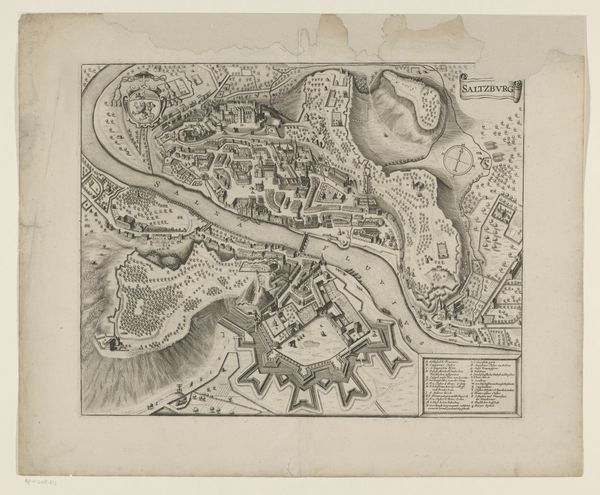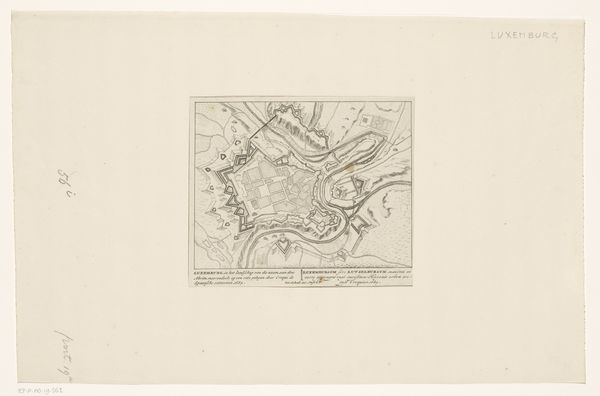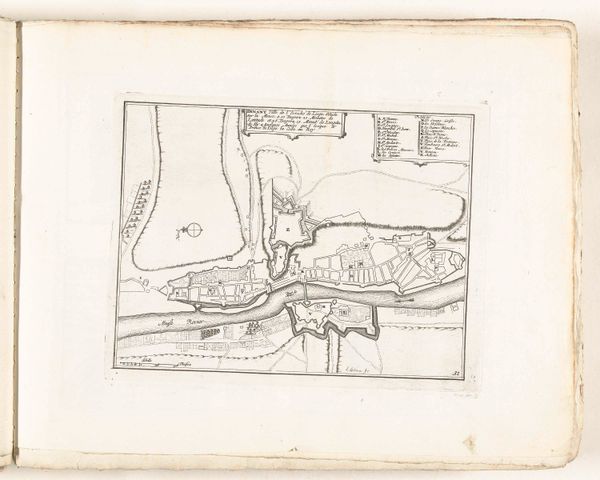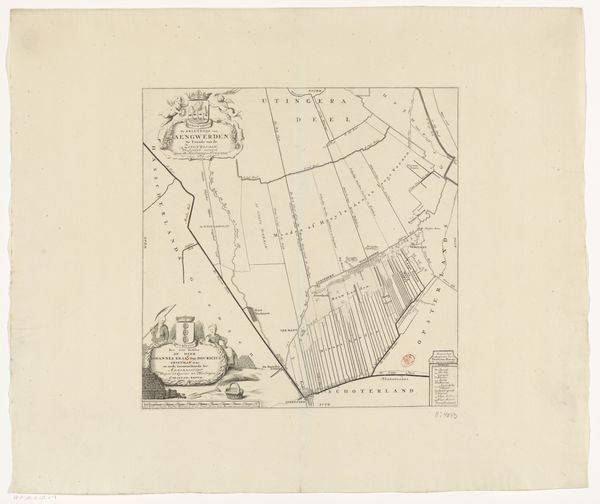
print, engraving
#
baroque
# print
#
old engraving style
#
cityscape
#
engraving
Dimensions: height 374 mm, width 507 mm
Copyright: Rijks Museum: Open Domain
Curator: This work, presently housed at the Rijksmuseum, is titled "Vestingplattegrond van Charleroi." Created between 1709 and 1712, this print offers an exquisitely detailed view of the city of Charleroi. Editor: Immediately striking is the visual harmony, though it's tinged with the rigid order imposed upon the land. The lines of fortification cut aggressively into what appears to be a naturally flowing landscape. It suggests a tense negotiation between human ambition and nature’s contours. Curator: It's fascinating how these city plans can tell stories of power. These weren’t just geographical documents; they were statements of military might and strategic thinking. Fortification transformed the visual grammar of the landscape, signaling the ever-present potential for conflict. The visual emphasis on controlled space mirrors the socio-political strategies of the time. Editor: Absolutely. The star-shaped citadel dominating the plan—a classic Vauban design—symbolizes order and control, but also a very specific vision of statecraft. Think of the people who lived within and around those fortifications. For whom was this control exerted and at what cost? And that carefully crafted aesthetic...what did it communicate to allies and enemies alike? Curator: I’m also interested in how printmaking allows for the democratization of such powerful imagery. This image isn’t just for military engineers or political elites; its reproducibility allowed for a broader dissemination of information, and potentially, ideology. We might also read into the use of linear, rigid form—it's not just about efficient defense; it’s an aesthetic choice meant to inspire a certain psychology. Editor: I agree. The seemingly neutral, objective rendering masks underlying political ambitions. By focusing on the 'objective' depiction of space, it subtly naturalizes power structures. This plan presents Charleroi not just as a place, but as a testament to the triumph of human engineering. Curator: Looking at this piece, I’m struck by the complex interplay between beauty and utility. It exemplifies how aesthetic choices were used to legitimize political dominance. It encourages reflection about how space can be wielded to embody ideological frameworks. Editor: For me, the artwork’s real power resides in its capacity to unveil the socio-political tensions of its time. It's a reminder that every line drawn, every angle measured, carries a weight far beyond mere geographical representation.
Comments
No comments
Be the first to comment and join the conversation on the ultimate creative platform.
